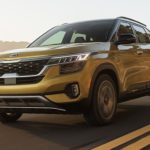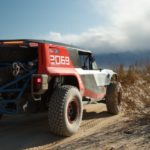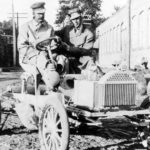The International Harvester Scout is one of the most storied nameplates in off-roading. From 1960 to 1980, more than half a million of these pickups and sport utility vehicles were produced, and they maintain a cult following among off-road enthusiasts and vehicle customizers. Together with the Jeep CJ and Ford Bronco, the Scout lineup helped set the stage for the explosion in SUV popularity that continues today, with GoodCarBadCar.net reporting more than 8.7 million SUVs sold in the U.S. in 2023 alone.
When MotorTrend first reported in September 2021 that Volkswagen was exploring the possibility of reviving the Scout, it raised quite a few eyebrows. Could the resurrection of the Harvester Scout happen more than 40 years after the last model rolled off the production line? The answer came in May 2022 when Volkswagen confirmed they would attach the Scout name to a new SUV and pickup truck. The latest reports target a release sometime in 2026, with the prototype unveiled in the summer of 2024.
Given the Harvester Scout legacy, anyone who’s even a casual off-road enthusiast should be intrigued. As 2026 creeps closer, there have been a lot of questions about what a new Harvester Scout, and an EV Scout in particular, will entail. We’ve gone down the rabbit hole to find out what you should know as we await the prototype and eventual debut.
The History of the Harvester Scout
We’ll start with a quick overview of the Scout’s background for those unfamiliar with the vehicle’s legacy. Debuting in 1960 as a competitor to Jeep and built in Fort Wayne, Indiana, the Scout was initially a two-door pickup truck before later being converted to a full-size SUV via a cap add-on.
The original Scout 80 had several recognizable features, including a removable hard top, removable side windows, and a fold-down windshield. Future models like the Scout 800 and Scout II built on the unique design while using tough Dana axles and powerful engines to drive over harsh terrain. International Harvester even tried turning the Scout into a camper-mobile at one point. They also developed the barebones Super Scout II that won multiple Baja 1000s in the 4×4 production class. Thanks in part to the success of the Scout, International Harvester was, at one point, the fourth-largest company in the US.
Unfortunately, several factors did the Scout in. International Harvester had general financial struggles by the mid-1970s, compounded by the 1973 and 1979 oil crises, plus problems engineering the Scout to meet new EPA efficiency requirements. They even took such measures as bumping the GVWR up to 6,200 lbs in 1976 specifically so they wouldn’t have to add power-sapping catalytic converters.
At one point, the company considered expanding the Scout lineup to minivans, coupes, high-end trucks, and dune buggies to regain its footing. A Scout III SSV concept vehicle was developed in 1979. However, these proposals were dashed by the 172-day United Auto Workers International Harvester strike in 1979 and 1980. This further damaged the company’s finances to the point where they tried to sell off the Scout division to recoup funds. When they couldn’t find a buyer, they shut the division down in October 1980. The company bottomed out in 1984, eventually selling the International Harvester name and other assets to Tenneco, merging them into a new Case IH company. International Harvester was then rebranded as Navistar International Corporation, which manufactures engines, commercial trucks, buses, and military vehicles to this day.
Here’s where the story comes full circle. In September 2016, Navistar entered a technology partnership with Volkswagen Truck and Bus, which has since been renamed Traton. The venture went so well that, in July 2021, Traton finished purchasing all the shares of Navistar, making them part of the Volkswagen Group. The MotorTrend report about the potential Scout rebirth came only two months after this acquisition. Coincidence? You decide.
What We Know about the New Scout
Now, the legend will be reborn, albeit under a shortened name. Case IH still owns the International Harvester trademark, and Volkswagen couldn’t or wouldn’t secure a licensing deal. Instead, they have spun off a new subsidiary from Navistar called Scout Motors, and the new vehicle will simply be called the Scout. Although it doesn’t have the full original name, it will at least indirectly be manufactured by the original company.
Knowing the causes of the original Scout’s demise, it seems fitting or ironic, depending on how you look at it, that the new Scout vehicles will be battery-powered. As such, they are being positioned as a competitor to existing off-road EVs such as the Rivian RS1, the forthcoming Jeep Recon, the GMC Hummer EV, and the Porsche Taycan. A few teaser photos and renderings have been released. Though the SUV will be smaller, which makes sense given the popularity of compact SUVs and crossovers in recent years, the retro homages are clear. While slightly sleeker, the new Scouts maintain a rugged boxiness, so there’s no mistaking their off-road intentions.
What else do we know? Scout Motors is developing a new EV platform on which the SUV and pickup will be based. It will be a classic body-on-frame design, which executives say allows the new Scouts to be rugged and well-proportioned. Still, they may share pieces with other VW vehicles, such as motors, and the onboard technology is expected to be top-of-the-line as they balance past and present.
Scout Motors is going big, too. As part of the development and launch, they are building a new factory in Blythe, South Carolina, capable of producing 200,000 EVs annually. The move is incentivized by the Inflation Reduction Act, state government support, and the goal to have the new Scout as all-American as possible. International Harvester was a patriotic brand, and the VW Group recognizes the importance of maintaining that connection. As part of the relaunch, Scout Motors provided support at the 2023 Baja 1000 to the Anything Scout Vintage Racing Team and its 1976 Scout II Terra, marking the nameplate’s first official presence at the event since 1982.
Finally, company executives told MotorTrend in early 2024 that they plan to offer various trims and factory packages while embracing aftermarket accessories so people can customize their Scouts. It was recently discovered that Scout Motors has trademarked various “harvest” synonyms along with some of the original Scout trim names like the Scout 800 and Scout II, giving them plenty of options. All that comes with the goal of a base price in the $50,000 range before buyer incentives, striving to keep the new Scout affordable for modern off-road enthusiasts.
Awaiting the Revival Day
Of course, there’s still a lot that people don’t know. Scout Motors has yet to reveal any information about the motors, powertrain, expected range, suspension, or interior. Certain features like four-wheel drive and locking differentials could be assumed to be part of a reasonable off-road vehicle, but until we get confirmation, an assumption is all it is.
Regardless, Scout’s rise from the ashes remains huge news to the off-roading community, and the excitement is building with every passing day. We eagerly anticipate the prototype to see how the Scout EV SUV and pickup truck carry on the International Harvester Scout heritage while adapting it to the present driving climate.




